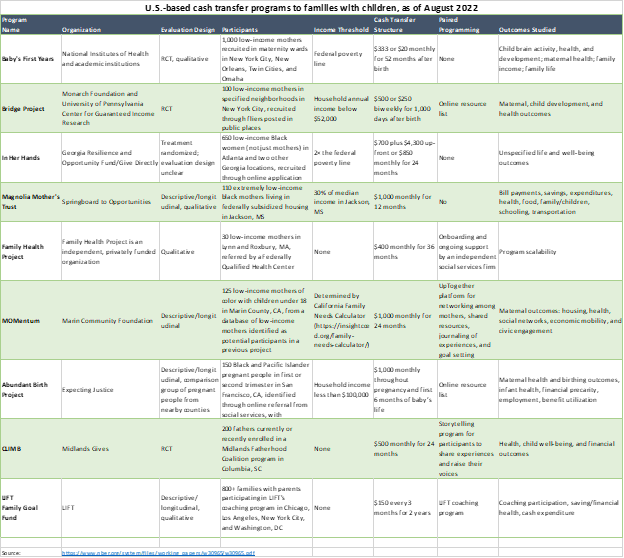Are cash transfers a good strategy to improve child well-being?

How can we help improve the lives of children? Does this mean giving money to their families or providing in kind good or services (e.g., frees schooling, health care, food stamps, housing)? Should any cash or in-kind transfers be made unconditionally or based on some conditions (e.g., require school attendance)? Many other countries use cash transfers to families with children as does the charity GiveDirectly, but this approach is less common in the U.S. Examples of these ex-US experiments include:
Canada Negative Income Tax (NIT): Mincome in the province Manitoba (1974-1979) Canada’s Ontario Basic Income Pilot (OBIP) randomly assigned low-income participants to monthly cash transfers (initiated in 2017) Dutch child benefit – depends on the age and number of children in a household but not incomeSpain baby bonus: lump-sum transfer given to all Spanish mothers after birth (initiated 2007)Spain (Barcelona’s) BMINCOME experiment modelled after the Canada’s Mincome, which randomly assigned 1,000 low-income individuals to either receive ~1,700 euros monthly or no cash transfers Finland’s nationwide basic income experiment (2017-2018)
A recent working paper by Shah and Gennetian (2023) provide a scoping review of unconditional cash transfer programs for families with children.
In contrast to the U.S., dozens of low-to middle-income nations use direct cash aid—conditional or unconditional—as a central policy strategy, with demonstrated positive effects across a host of economic and health measures and selected aspects of children’s health and schooling. This paper reviews the economic research on U.S. safety net programs and cash aid to families with children and what existing studies reveal about its impacts on family investment mechanisms and children’s outcomes… We then review nine contemporary unconditional cash transfer programs…
The programs are are summarized in the table below. A larger format table can be viewed here.







